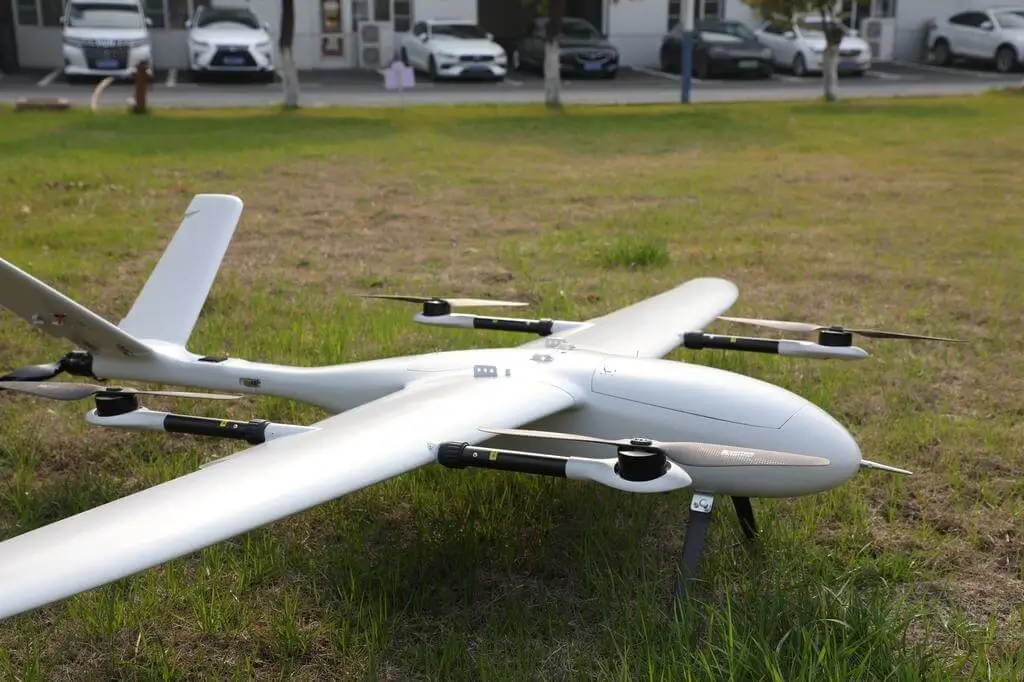VTOL Drone (Vertical Take-Off and Landing) is reshaping how we use aerial technology. Unlike traditional drones that need runways, it lifts straight up and lands anywhere. This flexibility makes its development prospects brighter than ever. Bettewill tracks this space closely, as better power solutions will fuel its next leap.
Urban Air Mobility: VTOL’s Big Break in Cities
Cities face traffic jams and delivery delays—and VTOL Drone offers a solution. Companies are testing it for last-mile delivery of food, medicine, and small packages. In Singapore, VTOL drones already deliver medical supplies to remote urban clinics.
Future plans include passenger-carrying VTOLs (eVTOLs) for short trips. Imagine flying from downtown to the airport in 15 minutes, skipping 2 hours of traffic. Major automakers and tech firms are investing billions in this space, pushing VTOL drone adoption faster.
Industrial & Infrastructure: VTOL’s Expanding Role
Industries like construction and energy need efficient inspection tools. VTOL Drone can hover near bridges, wind turbines, or power lines—no runway required. It captures high-res images to spot cracks or damage early.
Oil and gas companies use it to check offshore rigs, cutting inspection time by 50%. Mining sites deploy it to map terrain and monitor equipment. As industries prioritize safety and efficiency, demand for VTOL drones will surge.
Emergency Services: Saving Lives with VTOL Speed
Emergency teams rely on speed to save lives—and VTOL Drone delivers. It can carry defibrillators to heart attack patients in traffic-clogged areas. Firefighters use it to survey wildfires and find trapped people.
In natural disasters like floods or earthquakes, it reaches remote areas faster than ground vehicles. Search-and-rescue missions now cover 3x more ground with VTOL. Governments worldwide are increasing funding for this use case.

Tech Advancements Fueling VTOL Growth
Better batteries are a key driver. Bettewill’s high-capacity, lightweight batteries extend VTOL drone flight time by 40%. This lets them handle longer missions without recharging.
AI and sensor tech also improve performance. VTOL drones now avoid obstacles automatically and fly in bad weather. 5G connectivity lets them send real-time data to teams on the ground. These upgrades make VTOL more reliable for daily use.
Regulatory Progress: Clearing Paths for VTOL Adoption
Early VTOL growth faced regulatory hurdles. Now, countries are updating rules to support it. The US FAA has approved some VTOL delivery operations. The EU’s “Single European Sky” initiative will streamline cross-border VTOL flights.
Clear rules reduce uncertainty for businesses. More companies will invest in VTOL drone tech as regulations become friendlier. This will speed up innovation and make VTOL drones common in the next 5-10 years.
Market Size & Economic Impact of VTOL Drone
Experts predict the global VTOL market will reach $45 billion by 2030. This growth will create new jobs—from drone pilots to maintenance technicians. It will also boost related industries, like battery manufacturing and software development.
Small businesses will benefit too. Local delivery services can use affordable VTOL drones to compete with big companies. Rural areas will gain better access to goods and services via VTOL delivery.
Bettewill’s Role in Powering VTOL’s Future
VTOL drones need reliable, high-performance batteries—and Bettewill is ready. We’re developing lightweight, fast-charging batteries tailored to VTOL needs. Our batteries handle the stress of vertical take-offs and landings, ensuring steady power.
We work with VTOL makers to test and refine our solutions. As VTOL tech grows, Bettewill will keep innovating to power its next chapter.

